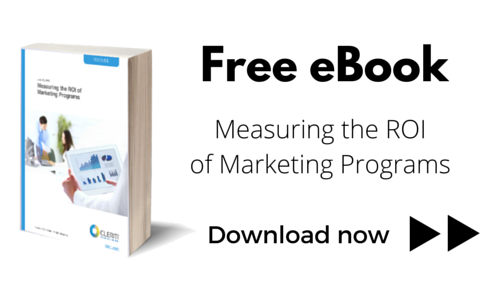- Jul 29, 2015
- By Gina Yeagley
- In Marketing Strategy and Planning
Refine Your Marketing Process: Getting Strategic with Surveys


Surveys are a strategic tool for companies looking to improve their marketing process. They help businesses improve their offerings, connect with customers, and plan future marketing efforts. However, there's more to the process than drafting 20 questions and sending them to everyone on your mailing list. Surveys take time and thought. As such, many people aren't too eager to complete one. If you strategically plan your surveys, you’ll be on the road to boosting response rates and data quality.
1. Use Closed-Ended Questions
Yes or no, true or false, 1 to 5, or multiple choice — you get the picture. Make a consistency in your survey so it is easier for people to answer. Closed-ended questions have two benefits. First, they allow respondents to choose an answer quickly, helping reduce abandonment rates. Second, they make the data easy to analyze. Survey respondents will appreciate how easily they can respond, and you’ll love how effortlessly you can compile their answers. Leave open-ended questions for the end of the survey.
2. Use Concise, Everyday Language
Remember that your audience might not be up to speed with your industry jargon or acronyms. You should also avoid vague questions that may be misinterpreted — being specific is key. For example, don't ask "How was your experience working with our representative?" Instead, try "In what ways did our representative meet your expectations?" and provide several categories the respondent can select. Your marketing process will benefit from the valuable data and you’ll be able to get more strategic with your efforts.
3. Keep the Survey Short
Long surveys are the leading cause of abandonment, especially as more and more respondents respond to surveys on mobile devices. An industry secret and numbers to remember are 10-7-140. Your survey should not be more than ten questions, you should have no more than seven answers respondents can choose, and the question in length should be no more than 140 characters (think the length of a Tweet). Even if someone completes the survey, they may arbitrarily select responses just to get it over with. Ask yourself what data you're looking for, and center your survey around it. See more survey tips to accommodate mobile respondents in the presentation below.
4. Make Sure the Survey Flows Logically
A survey is like a story — it follows the main character (the respondent) on a journey from beginning to end. The questions should flow seamlessly from one to the next. For example, if the question is "Did you purchase a computer from us within the past 6 months?" and the respondent answers 'No,' don't ask them "What type of computer did you purchase?" Branching and skip logic are a standard and easy to use feature in affordable survey tools on the market such as SurveyMonkey and QuestionPro.
If you're screening respondents, begin with demographics-based questions. Next, learn about their needs and experience with your company, if any. You'll then want to know how you can earn their business or improve your offerings to retain their loyalty. Any sensitive questions should be placed at the end.
5. Avoid Leading Questions
Including a question such as "Which reasons best describe why you love our product?" isn't only obnoxious, but it can also lead to skewed and worthless data. After all, some respondents might not be your product's biggest fans. Don't try to plant thoughts or read your audience. Give them reasonable options and tailor the questions that follow to their responses.
6. Offer a Reasonable Incentive
People love freebies. Even a small incentive such as points that lead to rewards or a 10 percent discount on a future purchase can improve response rates, not to mention drive sales. However, some incentives may encourage dishonest responses. For example, a respondent may falsify personal information in order to qualify for your survey. Offer an incentive that promotes interest in your business and products, not in a one-time gift. When incentives match the survey and the audience, studies show a 50 percent increase in response rates.
Effective incentives include:
- Coupon codes or discounts on your products
- A free trial of your product or service
- An easy to use points and rewards system
- Large prize raffles or a smaller prize for every respondent
- An invitation to a business conference
- A copy of your eBook or guide
- A magnet, mousepad, wristband, or other swag with your company's name and logo
Keep Your Audience in Mind
It doesn't hurt to put yourself in your audience's shoes. If you were a customer, would you want to take your survey? Keep it simple, short, and make sure your objective is to maximize how many customers complete it with relevant insights to help you take action. With some strategic thinking, you can refine your marketing process and get the response rate you want.





